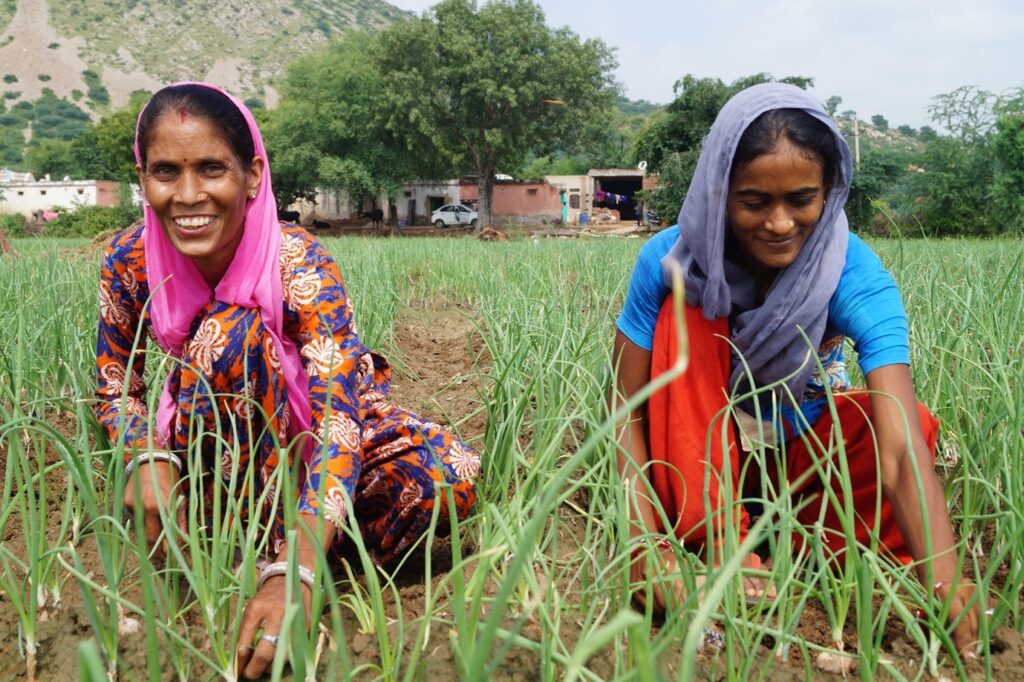Contribution Of Women In Agricultural Development

In his seminal book, A Theory of Justice, John Rawls drives home the core principles of the concept of justice, based on a group of individuals who are unaware of their age, sex, race, religion, economic class, wealth, income, intelligence, talents, etc. Inequalities that have underlying social and economic parameters must be addressed for the general good and be skewed toward the least advantaged.
However, human well-being indicators are built on a negative perception of the reduction of ill-being rather than building on a positive base of improving the well-being of people.
The two main Sustainable Development Goals, SDG1 and SDG2, build on a base of reducing poverty and achieving zero hunger. The ultimate goal of increasing income and achieving contentment with food quantity is lost behind moral valuation that has been accepted by consensus. No harm there, but individuals who are affected due to social and economic inequalities should also be aware of their position and rights.
WOMEN AND THE RURAL ECONOMY:
Women in rural India are important to the progress of the rural economy. They play multiple roles as farmers, wage earners, and entrepreneurs. Women also care for the well-being of their family members and are responsible for providing food and care to the children and the elderly.
Poor rural households are often responsible for unpaid work such as collecting wood and water.
Empowering rural women through productive employment and ensuring gender equality contribute to inclusive economic growth. That are the backbone of achieving poverty reduction and food security.
THE VITAL CONTRIBUTION OF WOMEN TO INDIAN AGRICULTURE:
Agricultural development is the most important and primary source of income for almost 70% of India’s households. With the majority of India living in rural regions, the importance of agriculture cannot be undermined. Approximately 60% of the Indian population works in agriculture and contributes about 18% to India’s GDP. Almost 80% of women are engaged and depend on agricultural development in rural India. Thus, women contribute to agriculture in ways that include:
• Women comprise 33% of the agriculture labor force and 48% of the self-employed farmers in India.
• With growing urban migration by men, the agriculture sector is being managed by women.
• Women contribute to agriculture through multiple roles as cultivators, entrepreneurs, and laborers.
• About 60–80% of the food produced in India can be attributed to the efforts of rural women.
• Rural women are also engaged in allied fields including livestock rearing, horticulture, post-harvesting operations, agro/social forestry, fishing, etc.
• Most labor-intensive manual operations in agriculture such as cattle management, fodder collection, milking, threshing, winnowing, etc., are performed by women.
• The community management role played by rural women helps ensure the dissemination of information and extension at the community level.
AGENTS OF CHANGE: EMPOWERING WOMEN AT THE GRASSROOTS LEVEL
S M Sehgal Foundation, a rural development NGO in India, has been working since 1999 to improve the quality of life in rural communities. S M Sehgal Foundation’s main program areas include Water Management, Agricultural Development, Local Participation and Sustainability, Transform Lives one school at a time, and Outreach for Development.
WOMEN’S LEADERSHIP:
The Local Participation and Sustainability Program enables women to participate in village-level institutions and public life. The program provides women with a platform to come together, voice their concerns about community and development issues, and work collectively to address problems that affect their families and their community. Capacity-building sessions teach leadership and communication skills that build their confidence to improve last-mile delivery of government programs, take leadership roles to address development issues, and participate in gram sabha. The program further builds the capacities of women elected representatives (WERs) to collectively tackle the problems of the village and organize women in Women Farmer Clubs.
POWER IN EMPOWERMENT:
Swapna, president of Woman Farmers Club Mohamadshapur, mobilizes members to participate in project activities and adopt the learnings
Swapna is the president of the Women Farmers Club Mohamadshapur, Siddipet district, Telangana, and has two acres of land that is shared with her brother in law, i.e. each of them uses it every alternate year. In 2020, Swapna grew cotton, paddy, green chilli, and tomato.
She has received training in integrated nutrient management (INM) and integrated pest management (IPM), preparation of the organic pesticide solution Jeevamritam, mulching, bio leaf extracts as organic fertilizer, waste decomposer as an organic fertilizer and for disease control, and she visited the Centre of Excellence on Vegetables and Flowers, Hyderabad, and Ankapur, Nizamabad district.
As the president of WFC, she enthusiastically executes her role of mentoring and motivating WFC members to utilize modern methods of farming, while also being an example by practicing the newly acquired knowledge from the project in her own farm.
CONCLUSION:
The challenge of ending poverty can only be achieved with the end of gender-based discrimination. Gender inequality deprives women of basic rights and opportunities for well-being. This in turn makes and keeps women poor.
The Indian government in its vision has realized the gap and is striving toward poverty alleviation through training programs, financial inclusion, strengthening of social services, and creating awareness of women’s rights. Ensuring women’s access to basic services, land control, property inheritance, and financial inclusion is the way forward to achieving the lofty goals of SDG1 and the reduction in poverty.
The way forward is to provide women with equal access to avenues for growth through social protection. The key to achieving SDG1 lies in realizing women’s rights.
Source: S M Sehgal Foundation
communications@smsfoundation.org